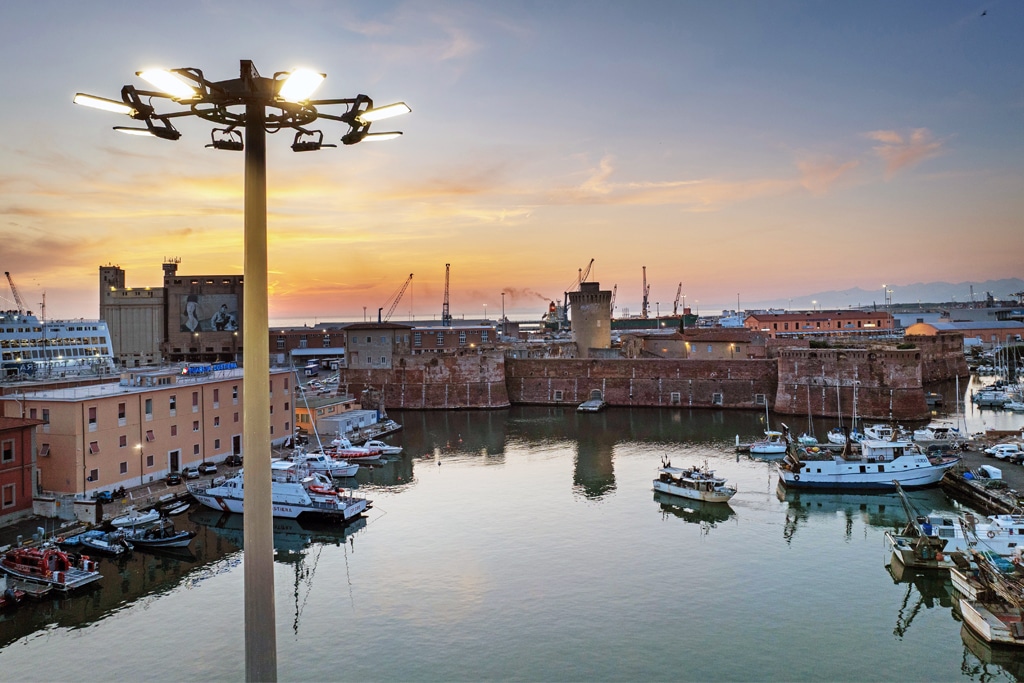Smart objectives and technology serving the port
The project aimed to achieve strategic goals, guided by both the design and the contracting authority’s directives. These included significantly reducing energy consumption and optimising the management of the entire lighting network. Simultaneously, the project endeavoured to improve safety standards and functionality within the port’s public spaces while fully complying with current regulations. A key feature of the new system is its state-of-the-art monitoring capability, offering constant, real-time data on light status and energy consumption, alongside remote control for flexible and proactive management. This ensures a safer, more efficient port, prepared to face future challenges.
Targeted interventions: technical details of the new system
The area underwent a notable upgrade, involving the replacement of existing light fixtures or, in some cases, the installation of new LED luminaires, selected for their high efficiency and equipped with dimmable sources. This advanced technology allows for precise adjustment of light levels according to operational needs, leading to lower energy consumption and reduced CO₂ emissions.
At the same time, outdated electrical panels were replaced, and a new-generation centralised management system was installed. This system, based on a widespread sensor network – with Zhaga nodes mounted on all luminaires and dedicated control units in the electrical panels – creates an interconnected “mesh network” enabling monitoring, control, and fine-tuning of each light point via a central digital platform. This signifies a leap towards full autonomy and efficiency.
Special attention was given to the redevelopment of Via Leonardo da Vinci, where new piling was installed. During this phase, DZ Engineering conducted a detailed technical verification of the light levels needed, focusing on the road’s traffic flow. This ensured full compliance with the high standards required for road safety and functionality.

 07/07/2025
07/07/2025






